SDM NEWS 2010
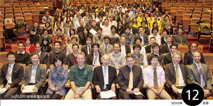 |
Large-scale complex systems have been in the news in 2010, both domestically and abroad. |
Korea beat Japan in a competition for a nuclear power plant order from UAE at the beginning of this year. Since then events that can be considered to be globally significant include the government's indecisiveness over joining the Trans-Pacific Partnership and the Free Trade Agreement, the Russian president's visit to Kunashiri island, the collision between a Japanese naval vessel and a Chinese trawler in the East China Sea, shell fire in the Korean peninsula, and WikiLeaks' publication of US government cables. Domestically, youth unemployment and an overall decline in social vitality are growing. The November 20 issue of Economist magazine contains a prediction that Japan will be overtaken by emerging countries by 2050. Such predictions only strengthen SDM's conviction that our basic approach, which is to design and manage systems from a global perspective over their entire life cycles, is essential to Japan's future. SDM will continue to focus on fostering future leaders that can think and act globally through enhanced collaboration with leading international universities. I appreciate your continuous support. |
|
Laboratory Profile
Lab profiles do not appear in this issue.
|
TOPICS
1. Special lecture by Prof. Teshima featured in Fuji Sankei Business i
2. Global COE Program on Nikkei and Nikkei Sangyo newspapers
3. Special lecture by Prof. Mogi
4. SDM visits R&D center for business continuity plan
5. Article by Prof. Toshiyuki Yasui featured in Nikkei newspaper
6. Movie in the Dark @ Campus Theatre 2010
7. Research presentation at National Lifelong Learning Forum
8. Management and Financial Strategy course visits Nishijima Corporation
9. Special lecture by Dr. R. Setchi from Cardiff University
10. The 5th workshop of SDM 2010 Design Project ALPS
11. The second Project Leader Training Course
12. Prof. Yasui's interview featured in Keizaikai magazine
13. ASME Annual Meeting
14. Strategic Social Education System Laboratory enters Shakaijin Kisoryoku Grand Prix
|
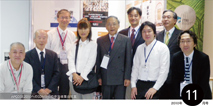 |
Bicycle lanes are a familiar system design issue. Karen Ellemann, the Danish Minister for the Environment, bicycled through Tokyo during her visit to Japan to attend COP10 in October. She commented that bicycle lanes and traffic education for children are necessary in this country. |
Around the same time, a chief researcher in a Ministry of Land, Infrastructure, Transport and Tourism research institute reported that over 6000 kilometers of main roads have enough space to set up 1.5 meter-wide bike lanes. However, such a project to set up bicycle lanes on 300 kilometers of model roads was said to face difficulties since negotiation with the related parties takes so long. These phenomena represent the typical governmental and social issue of lack of infrastructure, despite the dramatic increase in cyclists caused by social trends such as environmental symbiosis, ecological considerations, and promotion of good health. When counting the number of agencies involved in road maintenance, including those responsible for the safety and convenience of vulnerable road users, such as pedestrians, it seems like the list is longer than the list of those agencies that are not involved. This is one of the most important research topics in Keio SDM. In this limited space, I'd like to briefly mention the two messages I heard in Ms. Ellemann's remarks. One is that users should have top priority, and the other is that a hands-on approach should be taken. Those responsible for this issue must seriously consider returning to these principles. |
|
Laboratory Profile
Aerospace and Intelligent Systems Laboratory
Associate Professor
Assistant Professor
Assistant Professor |
TOPICS
1. ETH Special Lecture
2. RENAULT-Polytechnique HEC "Multicultural Management and Company Performance" Chair
3. GCOE/SDM booth in APCOSE2010
4. "Keio System Management Course" Special Lecture
5. Special Lecture by Prof. Duncan Moore
6. JAXA Systems Engineering (Intermediate A) Training Seminar
7. JAXA Systems Engineering (intermediate B) Training Seminar
8. Special Lectures by Mr. Niels Malotaux
9. International Conference on Plastic Optical Fibers and KPRI International Symposium
10. Information Session in Shanghai
Notice : SDM Japanese Website Renewed
|
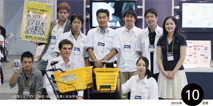 |
One doctoral student and nine master's students received their degrees in the SDM Commencement Ceremony held on September 14. Combined with the students who graduated this past March, a total of four doctoral students and 58 master's students earned degrees in the first graduating class. |
I hope each of them will apply what they've learned in SDM to their future career as leaders and creators of technological and social systems. I would like to express my gratitude for your support of SDM in its early years. Our efforts are bold and ambitious but we are confident that we will succeed with your continued support. In other news, the Japan Science and Technology Agency (JST) released a report naming specific Centers of Excellence in the MEXT GCOE Program. In the Systems Science and Technology category, two of the three Centers of Excellence belong to Keio University. As awareness of the importance of systems science grows, several Japanese universities are establishing departments devoted to the study of systems science. We are inspired to further develop our educational and academic activities to maintain our leadership role. |
|
Laboratory Profile
Agricultural Laboratory
Professor
Special Research Professor |
TOPICS
1. 2nd SysML Forum
2. Assistant Prof. Terumasa Narukawa commended by the Japan Society of Mechanical Engineers
3. Prof. Toshiyuki Yasui wins Best Paper Award, Japan Society of Competitive Intelligence
4. Commencement Ceremony
5. Entrance Ceremony
6. The 4th workshop of SDM 2010 Design Project ALPS
7. SDM Research Achievement presented in G-Spatial EXPO
8. Aria Iwasawa (M1), the first Asian to present in Plenary Session "Next Generation Vision for Space Operations" in IAC
9. Keigo Kakikura (M2) wins Excellent Poster Award in Microgravity Science Symposium
10. Hiroaki Murase (D2) et al. wins Best Paper Award in the Japan Association of Regional Development and Vitalization
|
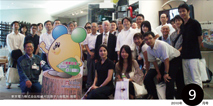 |
While Japan's global influence is now considered to be the most important issue in its efforts to revitalize its society and regain its power on the world stage, SDM is playing a role in Japan's internationalization efforts. |
GLOGIFT2010, the international conference covered in the last edition of SDM News, marked the beginning of our collaboration with the Indian Institute of Technology. Prof. Thong Ngee Goh, the key person in systems engineering in National University of Singapore, and Dr. Hiroshi Fujiwara, President of Internet Research Institute, Inc., spoke of the importance of cross-border entrepreneurialism in their inspirational keynote lectures at the conference. The student exchange program with Delft University of Technology, launched last year with three students from each university, will increase to five students this year, and possibly six, as the maximum. We also concluded student exchange programs with the Swiss Federal Institute of Technology Zurich, Politecnico di Milano and Institut National des Sciences Appliquees de Toulouse. Many SDM students are eager to study abroad. The internationalization of SDM is rapidly progressing. |
|
Lab profile
Human System Design Laboratory
Professor |
TOPICS
1. Special Lecture by Ambassador Ichiro Fujisaki
2. Visit to Kashiwazaki Kariwa Nuclear Power Station
3. The third workshop of 2010 Design Project ALPS
4. SDM Information Session
5. Exploring the potential of collaboration with U.S. universities to promoting project management
Notice : The second Project Leader Training Course
|
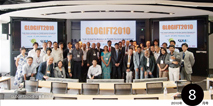 |
We are hearing a lot of good news about space projects recently. Many in Japan were excited about the remarkable achievement of the Hayabusa spacecraft and its successful return to Earth in June from its landing spot on the small asteroid, Itokawa. Even with modern technology, it is a historic achievement to rendezvous with a hundreds meter small asteroid and send pictures of it back to Earth. Hayabusa successfully returned the capsule, which showed its advanced control technology and recovery techniques to the world. |
The capsule, which traveled six billion kilometers to and from Itokawa in seven years was shown to the public at the Jaxa Institute of Space and Astronautical Science in Sagamihara and Tsukuba Space Center. Record crowds queuing for hours to get a glimpse of the capsule said it was worth the wait; seeing the capsule, which had been on such an adventure, was a very moving experience. One of the component technologies that played a role in the spacecraft's success was the "ion engine." NEC, the engine developer, is reportedly entering the global market by appealing its performance and reliability demonstrated in space. Considerable demand is expected since it is a key component for most geostationary communication satellites. I hope NEC enjoys further business success; they dominate the market for the attitude sensor guided by infrared rays from Earth that is used in communication satellites. As I'm involved in editing a book by Prof. Kuninaka, who was responsible for developing the ion engine used in Hayabusa, I hope young researchers, in particular, will pay more attention to this area. |
|
Lab profile
Science and Technology System Laboratory
Professor |
TOPICS
1. PM beginners seminar for Japan Aerospace Exploration Agency (JAXA)
2. JB Press features policy proposal by Prof. Yasui's study group
3. Visit to a megabank's dealing room
4. INCOSE International Symposium 2010
5. ISSS 2010 Conference
6. Open lecture "Reading Honey" in Keio System Management Course
7. GLOGIFT2010
|
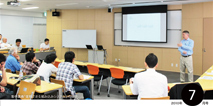 |
The explosion of BP's oil rig in the Gulf of Mexico and the subsequent oil spill was one of the largest and most catastrophic accidents with large-scale systems in recent years. As of early July 2010, over 200 million barrels have already spilled and there will be more. I would like to discuss this accident from three viewpoints. |
First of all, BP, one of the biggest oil companies in the world, has had several such accidents in recent years. Their slipshod work in building the rig and their lack of foresight in the first actions after the accident were to blame this time. Secondly, how effective was the education that their executives and engineers received in the BP school that BP commissioned MIT to administer for a couple of years? The third issue is not unique to BP but common to many engineering companies and their engineers. The accident revealed the fact that the technological level of robot operations 1500m below sea level is still quite low. It is obvious that operating robots in deep water is a challenging task so sudden accidents could have been predicted. From a systems engineering viewpoint, it is BP's fault that they were not prepared for such a predictable accident. A lot of people are disappointed with the level of BP's remotely-operated robot technology. Is there a difference between the technological levels of remote robot operation this time and the craning of the main engine of the H-II rocket 3000m below sea level off Ogasawara over a decade ago? I can't emphasize enough the importance of what we teach at SDM: "see both the details and the big picture." |
|
Lab profile
Ubiquitous Communication Laboratory
Professor |
TOPICS
1. Article by Prof. Takano featured in Self Brand 2011 magazine
2. Article on Prof. Sasaki's IEEE Daniel E. Noble Award published
3. Article by Prof. Ohkami in the Journal of the Japan Society of Mechanical Engineers
4. Expanding Student Exchange Program
5. Crash course "Reliable Embedded Systems"
6. JAXA Seminar (SE for beginners)
7. Uchu Mita-kai Meeting
8. The second workshop of SDM 2010 Design Project ALPS
Notice : Brief version of SDM brochure renewed
|
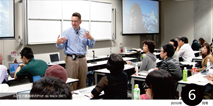 |
After the holiday week in May, the activities of research and education at the Graduate School of System Design and Management (SDM) intensified. |
Firstly, Design Project ALPS (Active Learning Project Sequence) started, and interesting themes related to long term safety and security were presented in the first workshop and students, mainly the 1st year in master's course, started to work on their assigned subject. I would like to thank all of the organizations for proposing themes and for participating in ALPS. Secondly, we had more frequent international collaborations. Professor Leifer from Stanford University gave a special lecture titled "Dancing with Ambiguity", Dr. Beiter from Stanford University and Professor de Weck from MIT were involved in the aforementioned ALPS, the partnership agreement with Istanbul Technical University has been concluded, and Second TPM (Delft University of Technology, Faculty of Technology, Policy and Management) /SDM workshop was held at Delft University of Technology (TU Delft). Education and research activities at SDM shift into full swing around this time of the year, and all faculty members are deeply involved with their students. We appreciate your continued support. |
|
Lab profile
Control Systems Design and Dynamics Lab
Professor |
TOPICS
1. ALPS Kickoff Meeting and ALPS #1 Report
2. Stanford Center for Design Research (CDR) / d.school Workshop
3. SDM Information Session
4. JCrash Course by Dr. James Martin "System Engineering and Architecture Framework"
5. Special Lectures by Prof. Duncan Moore "quot;Entrepreneurship"
6. University-wide Partnership Agreement with Istanbul Technical University
7. The Second Joint Workshop with TU Delft TPM and the 13th Economics of Infrastructures Conference
8. Special Lecture to Commemorate the Launch of "Keio System Management Course"
9. SDM Visited Yokohama Rise Facility for the Disabled
|
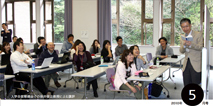 |
The Graduate School of System Design and Management (SDM) started the new academic year with 76 new students; 57 in the master's course and 19 in the doctoral course. The annual introductory camp held from April 23 to 25 was attended by almost all of the new students and faculty members. |
SDM's introductory camp, like the boot camps held in universities in the US and other countries, helps both new graduates and working students from various backgrounds find common ground and to gel quickly as a group. A get-together for students, professors and SDM office staff was held on the first day. The second day began with a lecture including a discussion by Associate Professor Shirasaka on logical thinking. Then students split into groups and were assigned a system-related theme to work on for several hours before making a presentation to other groups. The students, enthusiastic about the exercise, presented some excellent concepts. Students and faculty got better acquainted at the party in the evening. At the end of the camp, Professor Naoko Nishizawa at the Fukuzawa Memorial Center for Modern Japanese Studies, Keio University, gave a lecture on Fukuzawa Study and explained the spirit of Fukuzawa and the history of Keio University. Many students felt the camp was quite productive and the time was well spent. We are accepting more and more foreign students in SDM and are enhancing our cooperation with foreign universities. We offered the crash course "Supply Chain Management Game" by Professor Paul Schoensleben from the Swiss Federal Institute of Technology, Zurich at the beginning of April. Together with professors from MIT, Stanford University, and Delft University of Technology, we have started Active Learning Project Sequence (ALPS). Students have plenty of chances to use English, and we encourage them to actively find opportunities to improve their language skills in our English training courses and in their daily interactions with our foreign students. |
|
Lab profile
Business Engineering Laboratory
Professor |
TOPICS
1. CESUN Annual Meeting
2. Intensive course "Supply Chain Management"
3. Introductory Camp
4. English Training Course
5. Courses taught in English
|
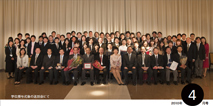 |
I would like to report the recent internal and international events in the Graduate School of System Design and Management (SDM). On March 29, the commencement ceremony was held on Hiyoshi Campus. Two students were awarded doctoral degrees and 49 students were awarded master's degrees. |
Almost all of the 17 master's degree students without previous work experience found jobs at their chosen companies and have started their careers. I would like to express my gratitude for your support, which has been instrumental in sending our inaugural master's degree students out into society. We welcomed 57 new students into the master's program and 19 into the doctoral program in our entrance ceremony on April 7. All of the professors at SDM have embraced the challenge of providing the world-class education and research that we offer. SDM aims to foster international and globally active leaders by adopting comprehensive approaches to design and to manage complex systems. International cooperation and communication in English have been our educational priority since the foundation of SDM, and we have strengthened our relationship with international universities such as MIT in the US and Delft University of Technology in the Netherlands. Since April 2010, we have increased the number of courses taught in English with the support of the Global 30 Program by the Ministry of Education, Culture, Sports, Science and Technology. Now, international English-speaking students can earn enough credits to obtain a degree. We have recruited a native English speaking Professor, and are offering crash courses from professors in western universities. The contents of the Design Project class (Active Learning Project Sequence (ALPS)), which has been taught in English will be strengthened this year, and we are ready to accept international students. SDM's activities with international universities will continue in May and onward. We are co-hosting a workshop with Delft University of Technology and co-hosting a workshop with Graduate School of Science and Technology, Keio University at the 2010 Renewable Energy International Conference. We are planning to co-host an international conference regarding flexible management with Stevens Institute of Technology in the US and Indian Institute of Technology in India. I believe such events are great opportunities for students to communicate with other future leaders and to add to their awareness of and experience in international settings on their quest to become global leaders. I do appreciate your continued support. |
|
Lab profile
Communication Design Laboratory
Associate Professor |
TOPICS
1. Intensive Course of Requirements Engineering
2. PMI-GAC (Global Accreditation Center) Academic Workshop
3. Interviews with Professor Kenichi Takano and Professor Yoshiaki Ohkami by Toyo Keizai
4. Special Lecture "OPM with Application to Systems Engineering"
5. Commencement Ceremony
6. Newspaper features article on Noriyasu Kitamura's research
7. 2009 Agricultural Laboratory activity report is available
8. Research and development by Professor Tetsuro Ogi and Professor Hidekazu Nishimura featured in nikkeiBPnet
9. Mook Theory features Dr. Hiromichi Yasuoka's article
10. Professor Haruyama' s visible light communication demo is available on YouTube
Notice : SDM English website revision
|
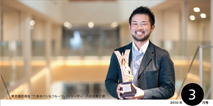 |
On February 10 and 11, the master's theses written by the first graduating class of the Graduate School of System Design and Management (SDM) were presented and examined. |
It was a moment replete with both expectation and anxiety. SDM is attempting to forge a true fusion of the humanities and sciences. What would the theses say and how would they be written? The students did not disappoint. Their presentations showed a full understanding of the "see the forest and also the trees" approach. They established and verified hypotheses and produced solid results. Even the outside member of the Examination Committee had high praise. We are proud of the enthusiasm that this first class displayed, and we look forward to seeing them apply that energy and ambition to great things in the future. |
|
Lab profile
Socio-Critical System Laboratory
Professor |
TOPICS
1. Master's Thesis Examination Committee for the 1st graduate class
2. Intensive lecture on "Holistic Thinking"
3. Intensive lecture on "Predictable Projects"
4. Degrees awarded and doctoral thesis titles
5. Student project wins the Award for Excellence in the finals of the Student Entrepreneur Grand Prix
6. Academic Year 2009 study abroad
7. Attendance at INCOSE International Workshop2010
8. Professor Ohkami named ESEP by INCOSE: First in Asia
9. "Energy Management in Low-Carbon Societies" published
10. Mr. Toshiyuki Seto selected for the 2009 "Award for Best Presentation by a Young Researcher" by the New Energy and Environmental Technology Group of the Institute of Electrical Engineers of Japan
Notice : Call for ALPS2010 project
|
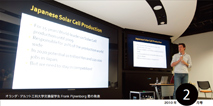 |
In the January edition of the SDM News, I reported that Japan had lost out to Korea in an international bid to build a nuclear power plant in the United Arab Emirates (UAE). In the early February, we learned that a Japanese group also lost to Russia in an international bid to build a nuclear power plant in Viet Nam. |
These repeated failures appear to have motivated the government to take action. If we are to solve the problems confronting us, it is urgent that we train people who are capable of acting on the international stage, and that is one the main focuses here at the Graduate School of System Design and Management (SDM). It is not enough to be an expert in your field. You have to bring the entire package, which means having negotiation skills and also spending years building up networks of friends and sources of information. Our objective at SDM is to develop people who are capable of functioning overseas. Since our inception in April 2008, we have pursued ties with MIT and Stanford University in the United States that have resulted in the Active Learning Project Sequence (ALPS) and other initiatives. We are also deepening our relationships with Delft University of Technology in the Netherlands and the Swiss Federal Institute of Technology (ETH). We look forward to the advice and guidance of the companies and enterprises that so generously support SDM. |
|
Lab profile
Symbiotic System Design Laboratory
Professor |
TOPICS
1. Final presentations by exchange students from Delft University of Technology
2. Student project awarded the Kanto Bureau of Economy, Trade and Industry Director-General's Prize in the Campus Venture Grand-Prix
3. Associate Professor Kohtake to write a monthly article for ITmedia Executive
4. January 30 research topic presentation
5. Professor Sasaki receives the 2010 IEEE Daniel E. Noble Award
6. Emiko Tsuji (2nd year masters student) wins the 2009 IEEJ Excellent Presentation Award
|
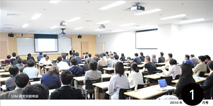 |
I would like to take this opportunity to extend my sincere wishes for a happy new year. The year has already given us our first shock. We lost to Korea in an international competitive tender for a nuclear power plant in the United Arab Emirates (UAE). |
While the two Japanese companies emphasized their high technology, France and Korea collaborated to create presentations that looked at the project from the buyer's point of view. And that was the decisive difference, according to advice that the top manager on the buyer's side given to the top manager of the Japanese group. Korea has long recognized the importance of systems engineering, and I am reminded of how its government and private sectors have worked together on systems approaches. I would like to underscore and share with you my sense of crisis at this defeat. What we are attempting to do at the Graduate School of System Design and Management (SDM) is to acknowledge the weakness that we Japanese have of losing sight of the forest through the trees; we want to train people who are capable of designing systems that are optimized at the big-picture level. Since our founding in 2008, we have served as the local chapter for the International Council on Systems Engineering, have built and strengthened ties with a number of foreign universities and have also become a member of the Council of Engineering Systems Universities (CESUN), an international university organization. Today, we enjoy global ties with more than 40 universities in North America, Europe, Asia and Australia. Engineering systems is a multidisciplinary endeavor that encompasses systems engineering, technology and policy, engineering proper, corporate activities, operating research and product development. The Council holds international conferences, provide forums to discuss the development of engineering systems and to share educational materials and curricula. In March of this year we were pleased to confer our first SDM Masters degrees and send our first class out into the world. There are great expectations riding on SDM, and we will also be subject to rigorous evaluation and critique. The faculty members at the graduate school are committed to taking on this challenge, and we look forward to your guidance and support. |
|
Lab profile
Visual Simulation Laboratory
Professor |
TOPICS
1. SDM information session (Saturday, December 12 at Hiyoshi and Tuesday, December 22 at Mita)
2. Courses on "Systems Architecture and Design" and "Systems Integration"
3. Professor Teshima lectures at the 2nd "i-college"
4. Professor Ohkami Interviewed by Nikkei BPnet
5. Global COE Program results announced at the KEIO TECHNO-MALL
6. Associate Professor Toma describes SDM leadership training in the Harvard Business Review
7. Professor Haruyama made a fellow of the "Institute of Electronics, Information and Communication Engineers" by the IEICE Communications Society
|














